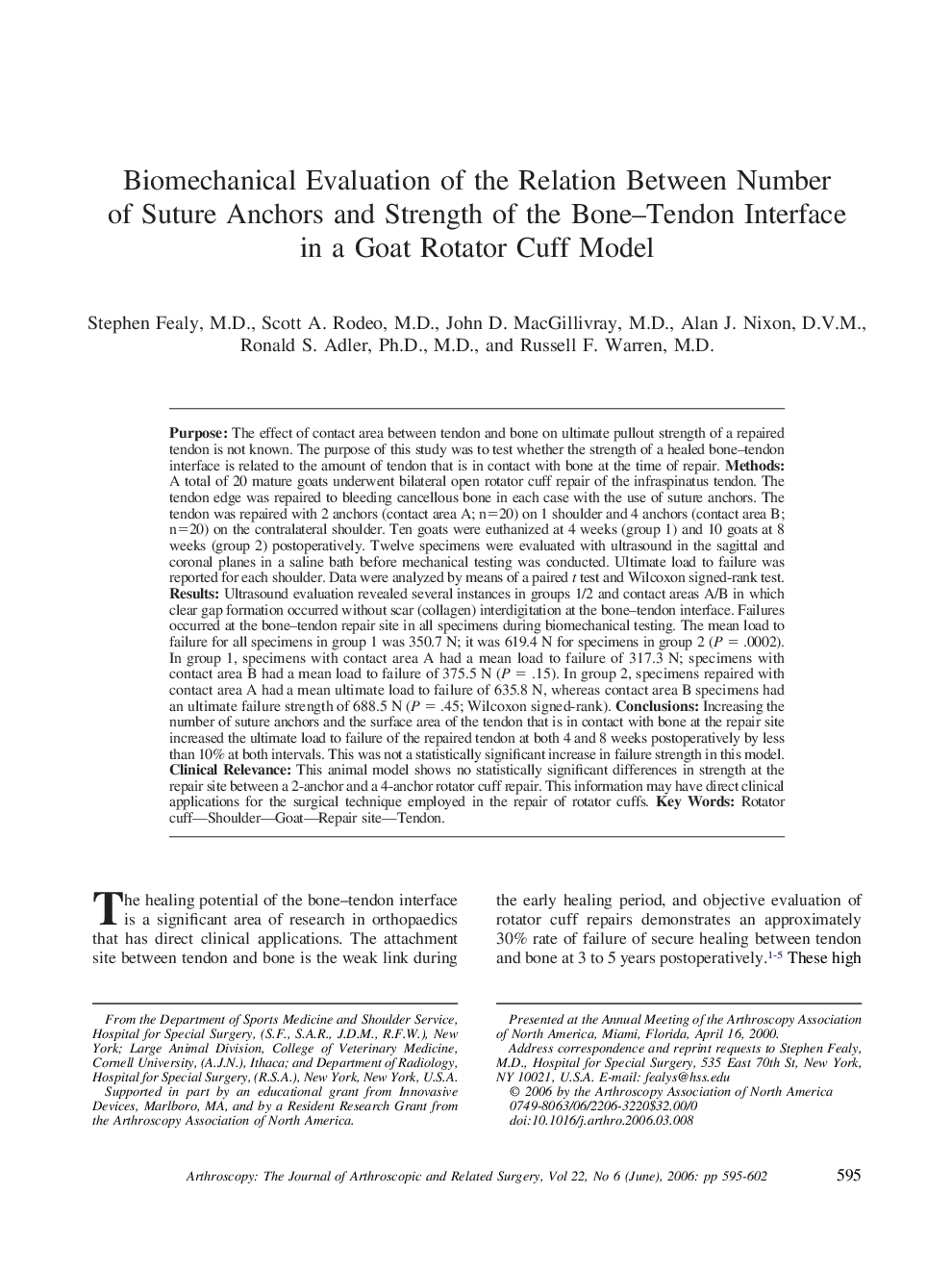| کد مقاله | کد نشریه | سال انتشار | مقاله انگلیسی | نسخه تمام متن |
|---|---|---|---|---|
| 4047739 | 1603609 | 2006 | 8 صفحه PDF | دانلود رایگان |

Purpose: The effect of contact area between tendon and bone on ultimate pullout strength of a repaired tendon is not known. The purpose of this study was to test whether the strength of a healed bone–tendon interface is related to the amount of tendon that is in contact with bone at the time of repair. Methods: A total of 20 mature goats underwent bilateral open rotator cuff repair of the infraspinatus tendon. The tendon edge was repaired to bleeding cancellous bone in each case with the use of suture anchors. The tendon was repaired with 2 anchors (contact area A; n=20) on 1 shoulder and 4 anchors (contact area B; n=20) on the contralateral shoulder. Ten goats were euthanized at 4 weeks (group 1) and 10 goats at 8 weeks (group 2) postoperatively. Twelve specimens were evaluated with ultrasound in the sagittal and coronal planes in a saline bath before mechanical testing was conducted. Ultimate load to failure was reported for each shoulder. Data were analyzed by means of a paired t test and Wilcoxon signed-rank test. Results: Ultrasound evaluation revealed several instances in groups 1/2 and contact areas A/B in which clear gap formation occurred without scar (collagen) interdigitation at the bone–tendon interface. Failures occurred at the bone–tendon repair site in all specimens during biomechanical testing. The mean load to failure for all specimens in group 1 was 350.7 N; it was 619.4 N for specimens in group 2 (P = .0002). In group 1, specimens with contact area A had a mean load to failure of 317.3 N; specimens with contact area B had a mean load to failure of 375.5 N (P = .15). In group 2, specimens repaired with contact area A had a mean ultimate load to failure of 635.8 N, whereas contact area B specimens had an ultimate failure strength of 688.5 N (P = .45; Wilcoxon signed-rank). Conclusions: Increasing the number of suture anchors and the surface area of the tendon that is in contact with bone at the repair site increased the ultimate load to failure of the repaired tendon at both 4 and 8 weeks postoperatively by less than 10% at both intervals. This was not a statistically significant increase in failure strength in this model. Clinical Relevance: This animal model shows no statistically significant differences in strength at the repair site between a 2-anchor and a 4-anchor rotator cuff repair. This information may have direct clinical applications for the surgical technique employed in the repair of rotator cuffs.
Journal: Arthroscopy: The Journal of Arthroscopic & Related Surgery - Volume 22, Issue 6, June 2006, Pages 595–602